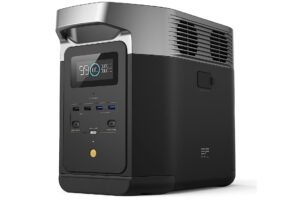Microquanta Achieves Record 23.65% Efficiency in Perovskite Modules

Nov 12, 2024 03:24 PM ET
- Microquanta achieves solar breakthrough with 23.65% efficiency in tiny perovskite modules, leveraging innovative cryolaser tech for unparalleled durability and performance in renewable energy.

Microquanta has announced a breakthrough in solar technology, achieving a conversion efficiency of 23.65% on small perovskite solar modules, certified by the Fujian Metrology Institute. The module, measuring 19.38 cm², utilizes the company’s proprietary frozen laser repair technology and demonstrates remarkable photo-thermal durability, exhibiting less than 5% efficiency loss after substantial UV aging.
While laboratory efficiency for small perovskite solar cells peaks at 26.7%, larger modules typically see lower efficiencies, around 22.5% or as low as 18% for square meter models due to uneven crystallization. Microquanta aims to address this issue with their cryolaser restoration technology, enhancing both small and large perovskite module performance.
How does Microquanta’s breakthrough enhance perovskite solar module efficiency and durability?
- Innovation in Technology: Microquanta’s use of frozen laser repair technology establishes a new paradigm in solar module production. This technology allows for the efficient healing of micro-defects that occur during the crystallization process, which in turn increases energy conversion rates.
- Durability under Stress: Their perovskite solar modules not only achieve high efficiency but also showcase exceptional durability. The modules exhibit less than 5% efficiency loss even after rigorous UV aging tests, suggesting that they can withstand prolonged exposure to harsh environmental conditions.
- Enhanced Crystallization: The patented cryolaser restoration technology enables more uniform crystal formation during the manufacturing process. This uniformity is crucial as uneven crystallization is one of the major barriers to achieving higher performance in larger solar modules.
- Scalability of Efficiency: While traditional methods compromise efficiency significantly when scaling up module size, Microquanta’s advancements position them to maintain higher efficiencies, potentially bridging the gap between small-scale laboratory successes and practical, large-scale applications.
- Market Implications: With the introduction of a high-efficiency and durable perovskite solar module, Microquanta may inspire significant shifts in the solar energy market, encouraging industry-wide adoption of similar technologies to boost performance metrics.
- Cost-Effectiveness: Improved efficiency and durability could lead to lower overall costs for consumers and manufacturers alike. High-efficiency modules can produce more energy over their lifespan, increasing the return on investment while reducing the need for frequent replacements due to performance degradation.
- Future Research Directions: The breakthrough opens up avenues for further research into optimizing perovskite material properties and other innovative technologies that could complement or enhance Microquanta’s existing offerings, thus continuing the evolution of solar energy solutions.
- Environmental Impact: Given the potential for higher efficiency and durability, these advancements might contribute to the broader effort of making renewable energy more sustainable and environmentally friendly, reducing waste associated with solar module replacements.
- Potential for Integration: Enhanced perovskite technology can be integrated with existing solar infrastructure, allowing for easier upgrades of current solar systems without complete overhauls, promoting the adoption of cutting-edge technologies among existing consumers.
SOLAR DIRECTORY
Solar Installers, Manufacturers




